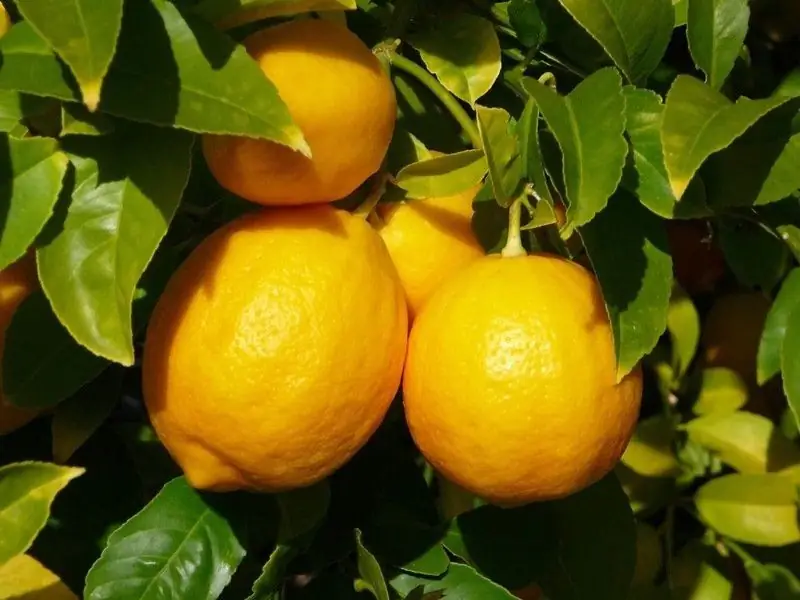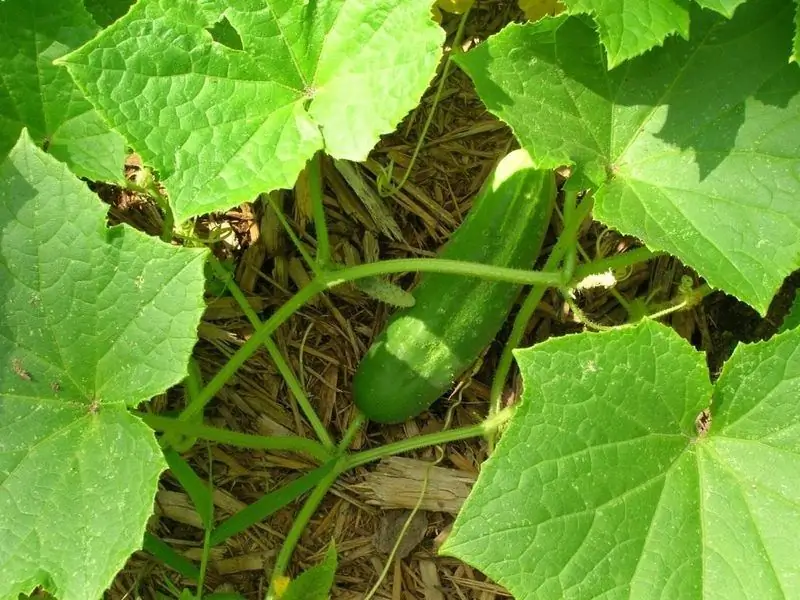
Table of contents:
- Author Bailey Albertson [email protected].
- Public 2023-12-17 12:53.
- Last modified 2025-06-01 07:32.
Where and how lemons grow in the open field and at home

Lemon is one of the most widely known citrus crops in the subtropical climate. Its sour, aromatic fruits are very popular in Russia.
The main biological characteristics of lemon
Lemon is one of the most common citrus plants. This tree is up to 5-8 meters high with evergreen leathery leaves. With a covering culture, it can be grown in bushy form.

Lemon has leathery evergreen leaves
In the wild, lemon no longer grows; it was domesticated in the 12th century in Southeast Asia. It is grown in gardens in all countries with subtropical climates. The main exporters of lemons:
- India,
- Mexico,
- Argentina,
- China,
- Brazil,
- Spain,
- Italy,
- USA,
- Turkey,
- Iran.

Lemon is an industrial fruit crop in subtropical countries
Lemon trees bloom in March - April, the harvest ripens in October - November. At above-zero air temperatures, ripe lemons can sag on the branches until spring, and immediately fall off when freezing. White fragrant flowers appear in grafted plants as early as 2-3 years after planting, in seedlings - in 7-8 years.

Lemon flowers are beautiful and fragrant
The winter hardiness of lemon trees is very low, they are severely damaged already at -3 ° C and die at -5..- 7 ° C. Therefore, in Russia, a lemon without shelter can grow only in a very small area of the subtropics of the Krasnodar Territory in the vicinity of Sochi and Adler. Attempts to cultivate lemon in Russian conditions were actively undertaken in Soviet times, but the problem of insufficient winter hardiness was not solved. There are no industrial plantations of lemon in Russia now, it is grown only by individual amateur gardeners.

Outdoors, lemons ripen in autumn
In Uzbekistan and Crimea, lemons are grown by the trench culture method. Lemon seedlings are planted in specially prepared trenches one meter deep and one and a half meter wide with well-reinforced walls. For the winter, the trenches are closed on top with glass frames, and in frosts, they are additionally insulated with straw or reed mats on top of the frames. At near-zero temperatures, lemon plants go into a dormant state, so they can do without light for up to 1-2 months. Lemon trench culture is also possible in Dagestan and in the southernmost regions of Ukraine.
My Italian friends in Lombardy, where winters are too cold for an industrial lemon crop outdoors, grow lemon trees in large tubs. Most of the year they are in the yard in the open air, and in winter, on the coldest days, they are brought into an unheated utility room without windows attached to a residential building. The first time I saw these lemon trees was in mid-April, when the Italian spring was drawing to a close and the gardens were already blooming. That winter, the lemons did not win very well, being frozen. Therefore, on the lemon trees exposed in the courtyard, branches killed by frost were very clearly visible, and a new young growth that appeared from the surviving part of the trunk and skeletal forks, and a bunch of crumbling fruits on the ground. Interestingly, my northern Italians grow their lemons purely for beauty,although in southern Italy lemon is one of the most important commercial crops.
Growing lemons in room culture
Lemon trees are often used as ornamental indoor plants; when grown in containers, their height does not exceed 2-3 meters. Homemade lemon can be grown from a seed from a store-bought fruit, but you will have to wait 7-8 years for flowering and fruiting.
How to grow a lemon from a seed at home - video
Indoor specimens of lemon trees are kept on a light windowsill with regular moderate watering (1 time per week in winter and 2 times a week in summer) and daily spraying of leaves with boiled water at room temperature. The optimum air temperature in the room is +20.. + 25 ° C in summer, +15.. + 17 ° C in winter. With this temperature regime, plants grow year-round without a dormant period, therefore, in indoor conditions, lemon can have flowers and fruits at any time of the year. Ripe fruits can remain on the branches for a long time without crumbling. They are quite edible, although less aromatic than real full-fledged lemons grown in the south in the open field.

On indoor lemons, flowers and fruits can be at the same time
In the middle lane, the fragrant lemon fruits can be grown at home on the windowsill, and in the southern regions - in the garden with proper shelter for the winter.
Recommended:
Ant Queen (queen): What It Looks Like, Where To Find, What Are The Functions

How the queen ant appears, how it creates its own anthill. Can ants live without their queen? How to find and destroy a queen ant. Video
Far Eastern Forest Cat (Amur): What It Looks Like, Photo, Habitat, Keeping In Captivity

The appearance of the Amur wild cat. Range and lifestyle of the Far Eastern forest cat. The life of an Amur cat in captivity. Conditions of detention and safety
Deprive Cats And Cats (shearing And Other Species): What It Looks Like, Signs, Treatment Of Kittens And Adult Animals At Home, Photo

How does shingle manifest in cats? The causative agent and types of the disease. Features of the course of the disease. Treatment methods and prognosis. Deprivation prevention. Reviews
What To Do If Google Chrome Does Not Work - Reasons And Solutions For Problems With The Browser, Including When It Does Not Start

The reasons why Google Chrome does not work: does not start, pages do not open, a gray screen is displayed, and so on. Solutions with photos and videos
How To Plant And Grow Cucumbers In The Open Field: Plant Seeds, Properly Care For Plants (water, Form, Tie Up)

What varieties and hybrids of cucumbers can be grown in the open field. Features of planting seeds and seedlings. Choice of place and timing. The nuances of care and formation
